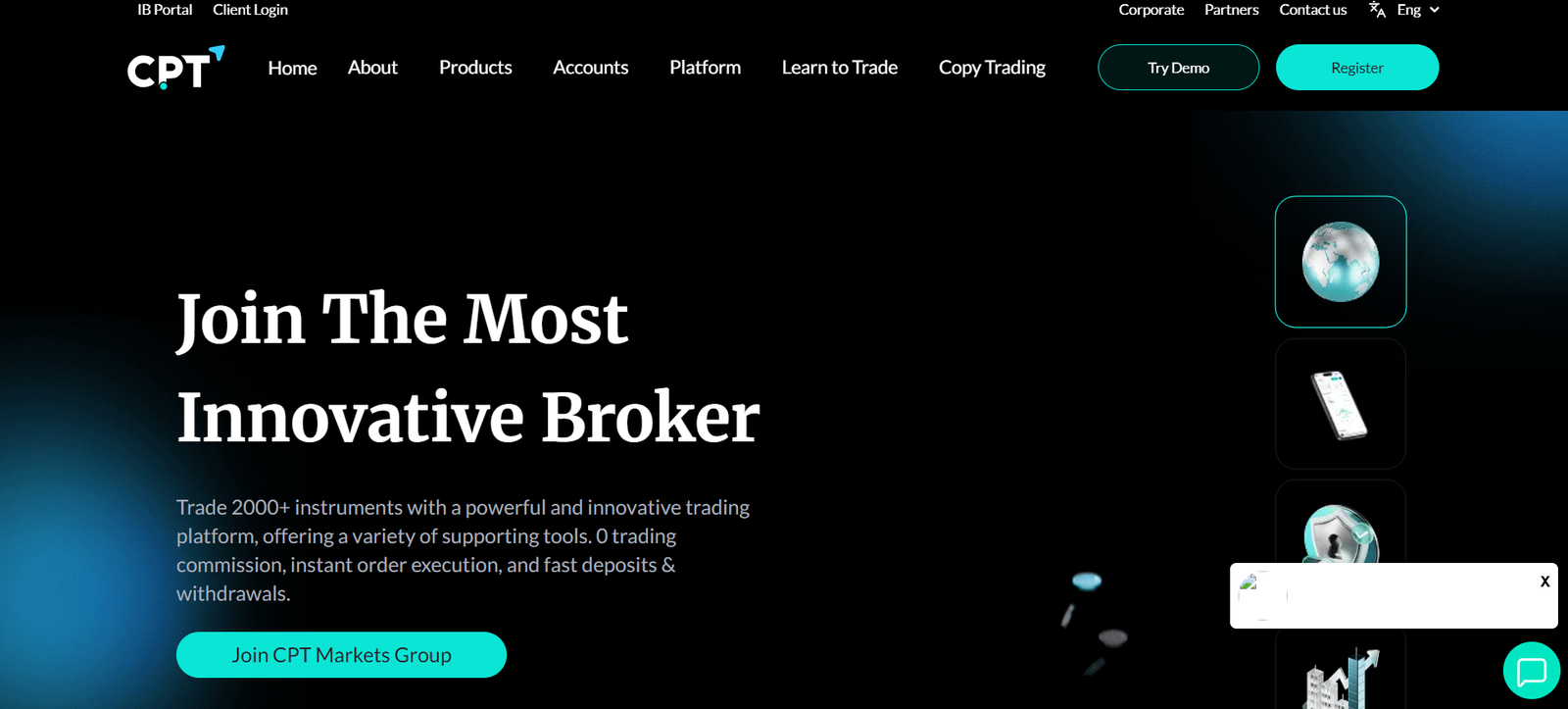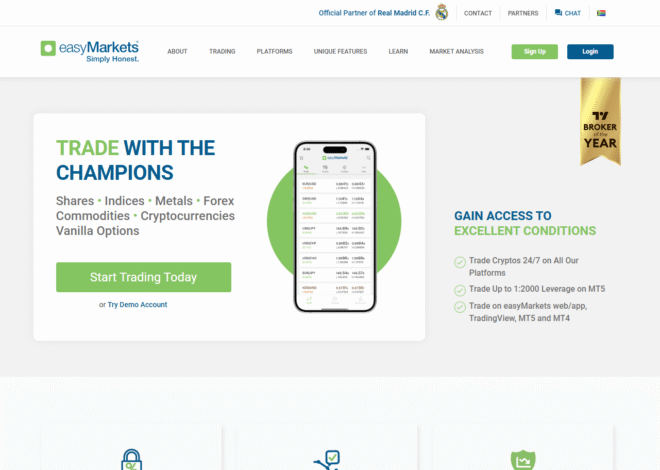
CPT Markets EXPOSED: Read This Critical Warning
The financial landscape is fraught with opportunities, but also with significant risks, especially when dealing with unregulated or poorly regulated brokers. Our investigative team has turned its spotlight on CPT Markets, a broker platform that has attracted a concerning number of red flags, user complaints, and regulatory scrutiny. This article serves as an urgent public warning, meticulously detailing the alarming issues surrounding CPT Markets and why potential investors should exercise extreme caution – or ideally, avoid it altogether. Before you consider depositing your hard-earned money, understand the critical truths our investigation has uncovered about CPT Markets.
Regulatory Warnings and Compliance Issues: A Troubling Picture
One of the most fundamental indicators of a trustworthy brokerage is robust regulation by reputable financial authorities. While CPT Markets often touts its regulatory status, a closer examination reveals a fragmented and often misleading picture. Many entities operating under the CPT Markets umbrella appear to be registered in jurisdictions known for weaker oversight, such as Mauritius (FSC) or Belize, while the entities with stronger licenses (e.g., FCA, CySEC) may not be the ones directly serving retail clients globally, creating a significant regulatory loophole.
The Illusion of Strong Regulation
Investors are often lulled into a false sense of security by the mention of well-known regulators. However, it’s crucial to understand which specific entity within the CPT Markets group holds which license, and more importantly, which entity is actually responsible for your funds and trading activities. Our analysis suggests that the operational entity handling most international retail clients might be under the purview of less stringent regulators, offering minimal investor protection compared to what one might assume. This strategic jurisdictional layering is a common tactic among questionable brokers.
Unauthorised Operations and Regulatory Blacklists
Concerns have been raised by various financial watchdogs regarding companies operating without proper authorization or exceeding the scope of their granted licenses. While we haven’t found a universal blacklisting of CPT Markets across all major regulators, the pattern of complaints and the regulatory structure they employ often align with brokers that eventually face severe penalties or outright bans. Investors should be particularly wary of any broker that appears on a regulator’s warning list for unauthorized activities or for operating a “clone firm” – an entity mimicking a legitimate one. Always verify the exact license number and the specific entity it applies to directly on the regulator’s website.
- Jurisdictional Arbitrage: Exploiting differences in regulatory strength.
- Limited Investor Protection: Weaker regulators offer less recourse for clients.
- Lack of Transparency: Obscuring which entity holds responsibility for client funds.
Analysis of User Complaints: A Consistent Pattern of Distress
The internet is awash with testimonials and reviews, and when it comes to CPT Markets, a disturbing pattern of negative experiences emerges across various investor forums, review platforms, and social media channels. These aren’t isolated incidents; they paint a consistent picture of client dissatisfaction and significant financial loss.
Common Grievances Against CPT Markets
User complaints frequently highlight several critical areas that should alarm any prospective investor. These issues range from technical platform problems to highly unethical operational practices.
- Account Manipulation: Numerous users report suspicious price spikes, unexplained slippage, and trades executed at disadvantageous prices, leading them to suspect that their accounts are being manipulated to benefit the broker.
- Execution Issues: Complaints about re-quotes, frozen platforms during volatile market movements, and delays in order execution are rife, suggesting a lack of robust infrastructure or, worse, deliberate interference.
- High-Pressure Sales Tactics: Aggressive cold calling, persistent emails, and promises of guaranteed high returns are frequently mentioned. These tactics are characteristic of boiler-room operations rather than legitimate financial advisors.
- Unclear Fee Structures: Users often discover hidden fees, exorbitant commission charges, or unexpected swap rates that significantly erode their profits or even lead to losses. Transparency, a hallmark of legitimate brokers, appears to be severely lacking.
- Poor Customer Support: When issues arise, clients report extreme difficulty in reaching competent support staff. Responses are often delayed, unhelpful, or completely absent, leaving clients feeling abandoned.
The Echo Chamber of Dissatisfaction
The sheer volume and consistency of these complaints across diverse platforms cannot be dismissed as mere isolated incidents. They suggest a systemic issue within CPT Markets‘ operational framework. Potential investors researching CPT Markets will quickly encounter these warnings, which serve as a collective cry for caution from those who have already experienced the platform’s alleged shortcomings. This collective user experience strongly contradicts the image of a reliable and client-centric broker that CPT Markets attempts to project. [Internal Link to How to Spot a Trading Scam]
Deceptive Marketing Tactics and Misleading Claims: Promises Unfulfilled
Like many questionable brokers, CPT Markets employs a range of deceptive marketing tactics designed to lure in unsuspecting investors, often preying on their desire for quick and substantial financial gains. These tactics frequently involve promises that are simply too good to be true, aggressive sales pitches, and a general lack of transparency regarding the true risks involved.
Unrealistic Profit Guarantees
One of the most glaring red flags is the promise of high, often guaranteed, returns with minimal risk. Legitimate financial trading involves inherent risks, and no reputable broker can guarantee profits. CPT Markets is often accused of using language that downplays risks and overstates potential earnings, creating an unrealistic expectation for novice traders. This includes promoting “risk-free” strategies or “expert advisors” that supposedly generate consistent profits without effort. Such claims are a cornerstone of financial scams.
Aggressive and Unsolicited Outreach
Many individuals report being contacted by representatives claiming to be from CPT Markets through unsolicited phone calls, emails, or social media messages. These representatives often push for immediate deposits, using high-pressure sales tactics and creating a sense of urgency. They might claim to have exclusive market insights or offer “limited-time” bonus schemes designed to rush individuals into making deposits before they have time to conduct proper due diligence. This aggressive outreach is a classic hallmark of fraudulent operations.
Misleading Promotional Materials
The promotional materials disseminated by CPT Markets often feature glossy images, sophisticated jargon, and selective statistics designed to project an image of professionalism and success. However, upon closer inspection, these materials often lack verifiable data, independent audits, or clear risk disclosures. Testimonials, if present, are frequently generic or unverifiable, raising suspicions about their authenticity. The overall impression created is one of a highly successful and trustworthy platform, which often stands in stark contrast to the actual user experience.
- “Guaranteed Returns”: A classic scam indicator.
- Cold Calling: Unsolicited approaches for financial products are often illegal or highly suspicious.
- Vague Risk Disclosures: Downplaying the inherent volatility of financial markets.
Withdrawal Problems: A Major Red Flag for CPT Markets
Perhaps the most critical and damning issue reported by clients of CPT Markets pertains to difficulties, delays, and outright refusal to process withdrawal requests. This is a recurring theme across numerous complaints and is often the final, undeniable sign that a broker is operating fraudulently. For many, the inability to access their own funds after making a profit or even after incurring losses transforms a bad trading experience into a full-blown financial nightmare.
The Obstacle Course of Withdrawal
When clients attempt to withdraw funds from their CPT Markets accounts, they often face a frustrating and deliberately complicated process. This can include:
- Excessive Documentation Requests: After initial deposits, clients are suddenly asked for an array of new, often irrelevant, or previously submitted documents, delaying the process indefinitely. This is a common tactic to prolong the hold on funds.
- Unexplained Fees and Charges: Funds requested for withdrawal are often subject to unexpected “processing fees,” “dormancy fees,” or other obscure charges that significantly reduce the amount received, or even make the withdrawal uneconomical.
- Account Freezes or Closures: Some users report that their accounts are inexplicably frozen or closed immediately after a withdrawal request is made, with CPT Markets representatives citing vague “security concerns” or “terms and conditions violations.”
- No Communication: After submitting a withdrawal request, clients often find that their communications with CPT Markets support cease or become incredibly slow and unhelpful, leaving them in the dark about the status of their funds.
- Outright Refusal: In the most severe cases, CPT Markets simply refuses to process withdrawals, stating that the funds are “lost” due to market conditions (even if the client reports profits) or that the client failed to meet certain elusive trading requirements.
The Psychology of Delay
The strategy behind these withdrawal impediments is often psychological. By delaying and complicating the process, CPT Markets hopes that clients will either give up, continue trading (and potentially lose more money), or become so frustrated that they accept a reduced amount. The inability to withdraw funds is not merely an inconvenience; it is a fundamental breach of trust and a strong indication that the broker may not have the clients’ funds segregated or even available. This is why withdrawal issues are universally considered a primary indicator of a scam.
The Illusion of Legitimacy: How CPT Markets Operates Its Facade
Many victims of financial scams often express surprise at how legitimate the fraudulent operations appear initially. CPT Markets is no exception. They often invest in creating a professional-looking website, seemingly robust trading platforms, and initially responsive customer service to build trust. This carefully constructed facade is designed to mask the underlying issues and lure in unsuspecting investors.
Professional Website and Branding
The CPT Markets website might feature sleek design, detailed (though often vague) information about their services, and professional branding. This gives an immediate impression of a legitimate, established financial institution. They might showcase advanced trading platforms, a variety of assets, and even educational resources. This initial polish is crucial for attracting new clients who perform only surface-level due diligence.
Sophisticated Trading Platforms
Many users report that the trading platforms offered by CPT Markets (often standard white-label solutions like MetaTrader) appear functional at first glance. However, the issues often lie beneath the surface, with alleged manipulation of prices, execution speeds, or spreads that are difficult for an average trader to detect until significant losses have occurred. The platform itself might be a legitimate piece of software, but how the broker operates it is where the deception lies.
Initial Customer Service Engagement
When first engaging with CPT Markets, potential clients might experience prompt and helpful customer service. Account managers might be assigned, offering assistance with the setup process and initial deposits. This initial positive interaction builds rapport and trust, making it harder for clients to suspect foul play until they attempt to withdraw funds or encounter significant trading issues. This “honeymoon period” is a deliberate strategy to secure deposits.
The facade crumbles only when the client attempts to exercise their fundamental right to withdraw their capital or when their trading experiences consistently deviate from market norms, resulting in losses that seem too consistent to be coincidental. It is at this point that the true nature of CPT Markets allegedly reveals itself.
What to Do If You’ve Been Affected by CPT Markets
If you suspect you have been a victim of fraudulent practices by CPT Markets, it is crucial to act quickly and methodically. Your swift response can significantly impact your chances of recovering funds and preventing further losses.
- Cease All Communication: Immediately stop all deposits and cease communication with CPT Markets representatives. Do not be pressured into making further deposits, no matter what they promise.
- Gather All Evidence: Collect every piece of documentation related to your dealings with CPT Markets. This includes:
- Emails and chat logs (especially those promising returns or discussing withdrawals).
- Transaction records (deposit confirmations, bank statements, credit card statements).
- Account statements from CPT Markets.
- Screenshots of your trading platform, showing account balance, trades, and any suspicious activity.
- Any identity documents you sent to them.
- Contact Your Bank/Credit Card Company: If you deposited funds via credit card, contact your bank or credit card provider immediately to inquire about initiating a chargeback. Time limits usually apply, so speed is essential. For wire transfers, recovery is more difficult but still worth investigating with your bank.
- Report to Financial Authorities: File a formal complaint with the relevant financial regulatory bodies in your jurisdiction and the jurisdictions where CPT Markets claims to be regulated (e.g., FCA in the UK, ASIC in Australia, CySEC in Cyprus). Even if the specific entity you dealt with is offshore, reporting helps build a case against the broader operation.
- Seek Legal Advice: Consider consulting with a legal professional specializing in financial fraud. They can advise you on potential legal avenues for recovery, especially if significant funds are involved.
- Share Your Experience: Report your experience on reputable consumer protection websites, investor forums, and review platforms. This helps warn others and contributes to a broader understanding of the alleged issues with CPT Markets.
Protecting Yourself from Broker Scams: Essential Due Diligence
The case of CPT Markets serves as a stark reminder of the critical importance of rigorous due diligence before engaging with any financial broker. Protecting your investments requires vigilance and a healthy dose of skepticism.
- Verify Regulation Thoroughly: Do not simply trust a broker’s claims of regulation. Visit the regulator’s official website (e.g., FCA, CySEC, ASIC) and use their public register to verify the license number, the exact name of the regulated entity, and the scope of their authorization. Ensure the entity you are dealing with is the one actually regulated.
- Research User Reviews and Complaints: Search for the broker’s name on multiple independent review sites, forums, and consumer protection platforms. Pay close attention to patterns of negative feedback, especially concerning withdrawals, account manipulation, and customer service.
- Be Wary of Unsolicited Offers: Legitimate financial advisors rarely cold call or send unsolicited messages promising guaranteed returns. Treat any such contact with extreme suspicion.
- Understand Withdrawal Policies: Before depositing any money, thoroughly read and understand the broker’s withdrawal terms and conditions. Look for clarity on fees, processing times, and required documentation. If these are vague or overly complex, it’s a major red flag.
- Start Small: If you decide to proceed with a new broker despite some minor concerns, begin with a minimal deposit. Attempt a small withdrawal early in your engagement to test their process before committing significant capital.
- Educate Yourself: Continuously learn about common scam tactics in the financial world. Knowledge is your best defense. [Internal Link to Beginner’s Guide to Forex Scams]
Conclusion: A Resounding Warning Against CPT Markets
Our comprehensive investigation into CPT Markets has uncovered a significant number of alarming issues, ranging from questionable regulatory practices and a consistent stream of severe user complaints to alleged deceptive marketing tactics and, most critically, widespread reports of withdrawal problems. These red flags are not isolated incidents but rather form a troubling pattern that strongly suggests CPT Markets operates with a disregard for its clients’ financial well-being and, in many instances, may be engaging in practices synonymous with financial fraud.
We urge all current and prospective investors to heed this critical warning. The risks associated with CPT Markets appear to be substantial, and the potential for financial loss is exceptionally high. Your capital is at stake, and based on the evidence, entrusting it to CPT Markets could lead to severe and irreversible consequences. We strongly advise against engaging with this platform. If you have already suffered losses or faced issues with CPT Markets, please take immediate action by gathering evidence and reporting your experience to the appropriate financial authorities. Your actions can help protect others from falling victim to similar schemes.
External Links Reference Table
| Anchor Text | URL |
|---|---|
| Financial Conduct Authority (FCA) Report a Scam | https://www.fca.org.uk/consumers/report-scam-unauthorised-firm |
| Australian Securities and Investments Commission (ASIC) Scamwatch | https://www.scamwatch.gov.au/report-a-scam |
| Reuters: Global crackdown on forex scams | https://www.reuters.com/business/finance/global-crackdown-forex-scams-2023-09-28/ |


